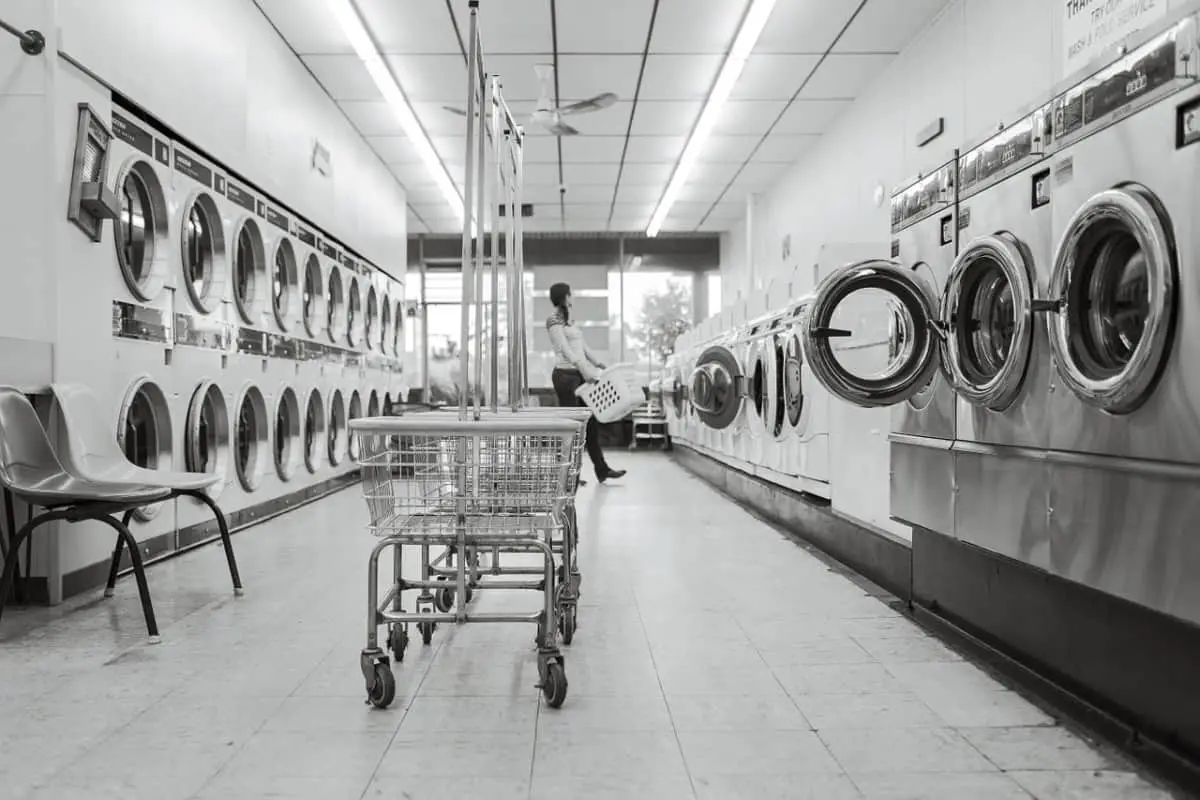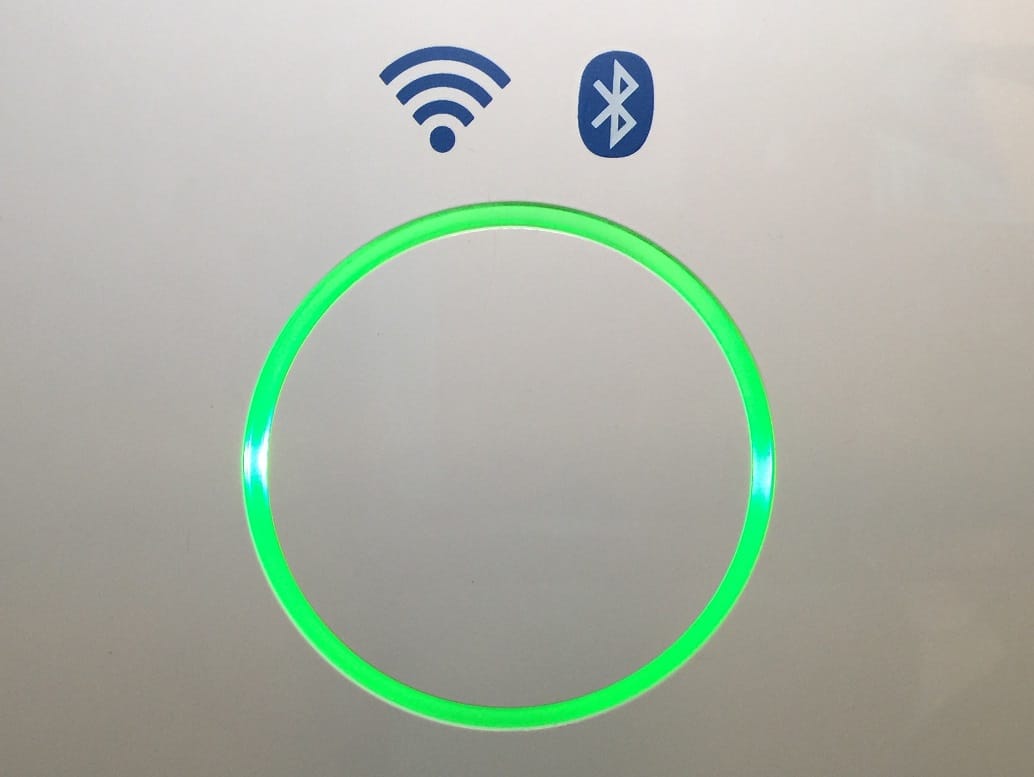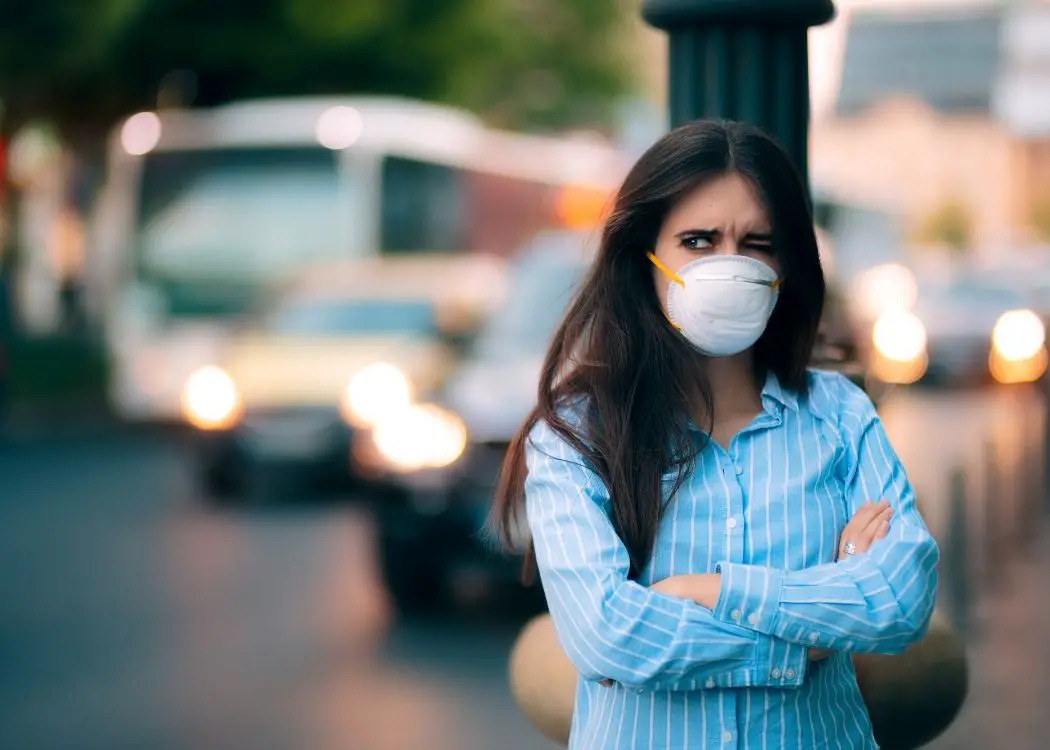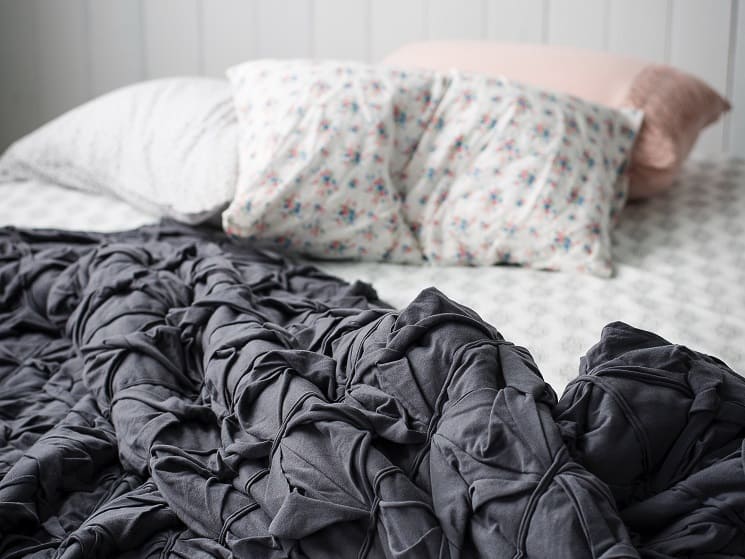Table of Contents
**This page contains affiliate links and I will be compensated if you make a purchase after clicking on my links**
…But there are more effective ways to reduce allergens in your bedroom
I never make my bed. I can’t be bothered. To my mother’s annoyance, I dodged this task as a child.
When I moved away to attend college, I initially didn’t make my bed either. I shared a small dormitory room, where any visiting friends would either sit on the floor or my (unmade) bed. After my roommate made my bed for the first few days, I started making my bed.
Two years later, my roommate and I and several others moved into a house where we all had separate rooms. I’ve never made my bed since.
Back in 2006 a study by Crowther, et al. was published that suggested that leaving your bed unmade would help reduce the numbers of dust mites.
Dust mites are microscopic insect-like creatures that live in areas of humidity. Such as the humid micro-climate in our bedding that we create with our sweat and body heat. They feed off the dead skin that we slough off. Yes, your mattress, pillows, and bedding may be infested with millions of them!
For most people, this is a non-issue.
However, if you have an allergy to dust mites, as I do, then it becomes an issue.
(If you suspect you have allergies, asthma, or red/itchy skin characteristic of atopic dermatitis, please consult with a medical professional.)
1. Reduce humidity to < 50%
Humidity is the key. Dust mites prefer humidity levels between 70 to 80 percent. The study above suggested that leaving your bed unmade would help dry out your bedding and reduce dust mites.
Other studies have shown that reducing the humidity in your room below 50% also reduces dust mites.
The study by Crowther has been met with a bit of skepticism by allergists. Little research on bedding microclimate has been published since. And if you live in a humid environment where your room is above 50% humidity, then leaving your bed unmade will have no effect.
Unfortunately “don’t make your bed” has not made any official list from allergists of things to do to reduce your exposure to dust mites in your bedroom.
However, what has made the list is using a dehumidifier or your air conditioner to keep the humidity in your bedroom below 50%.

Image by Ryan McGuire from Pixabay
2. Wash everything in hot water
If you have dust mites, the easiest way to eliminate them is via washing in hot water and detergent. This removes both the dust mites themselves, as well the allergens they release. Indeed, dust mite allergens denature, or break apart, with heat.
This is hot water, not warm. At least 130 F (54.4 C).
Dust mites may not be the only thing you are allergic too. Furry friends leave lots of allergens. Likewise, an open window or your clothing may introduce outside pollen from grasses and trees.
Washing eliminates all these allergens.
This includes obvious things like sheets, blankets, comforters, and mattress pads. But also, unobvious things like pillows, curtains, rugs and stuffed animals.
Yes, dry cleaning effectively eliminates 100% of dust mites. However, it doesn’t remove all the allergens.
If you absolutely can’t wash in hot water, there are other recommended tweaks to wash away dust mites and allergens.
These include either freezing you bedding overnight or placing your bedding in the dryer first to kill dust mites.
Keep in mind that neither tactic will remove allergens. But water temperature doesn’t need to be hot to remove the allergens.
Avoid bedding that you can’t wash. Those hand-made woven blankets you purchased on your trip to South America might be best displayed elsewhere.
3. Seal everything else in allergen-proof covers
Obviously, you can’t throw your mattress in the washing machine. And you may not be able to do the same with your pillows.
Unless your mattress comes with its own allergen-proof cover, you’ll need to purchase your own.
A mattress or pillow cover should be zippered to form a “seal” between the mattress/pillow and you. Some covers even have an extra Velcro seal over the zipper.
These covers are designed to have very small pore sizes that will still allow airflow but stop the movement of microscopic dust mites and allergens. This study recommends pore sizes from 2-10 microns to block allergens.
Dust mites are slightly larger at 0.2-0.3 mm, or 200 microns. Dust mite eggs will be smaller. Any cover rated to block allergens will also block the mites themselves.
As a bonus, these covers will block bed bugs and their eggs, which are much larger: an adult bedbug is 5 mm, and their eggs are around 1 mm (1000 microns).
These authors note that repeated washes of the covers may increase pore size.
Covers fall into several groups based on the size of their pores or weave.
- “Stain-resistant”. This is your generic cloth cover intended as an additional protective barrier between you and your mattress. The weave is probably large enough to let everything else through. These are the most cost-effective but are not protective against critters, allergens, or even a large amount of fluids.
Depending on the pore size, the cover may protect against:
- Bedbugs
- Dust mites
- Allergens (plus “pollen” and “pet dander”)
With the addition of either vinyl (not breathable) or polyurethane (breathable), your cover may either be:
- Water-resistant
- Waterproof
Note that “water-resistant” and “waterproof” have different meanings, with the latter having more protection against spills and other “accidents”.
Also be aware that although the cover encloses the entire mattress, it may not be considered an “encasement”. Sometimes a different fabric may be used on the sides or bottom that may or may not share the same blocking properties.
Some products “block” dust mites but not bedbugs, even though the latter are larger.

The indicator light on my portable HEPA filter unit. (Image by author.)
4. Filter the air
It is also recommended that you circulate your air through a high-efficiency particulate air (HEPA) filter designed to capture any airborne particles in the air, including dust mites, pet dander, mold spores, and pollen.
You can either have a portable HEPA filter unit in your bedroom or add a high-quality filter to your heating and air conditioning unit.
Or, do both.
Portable HEPA filter units
A portable unit simply has a fan that pulls air through two filters. The first one, or pre-filter, is a simple carbon filter designed to filter large dust particles (including pet fur) and treat odors. This filter will get blocked quickly and will need to be changed about every three months.
The unit will let you know when you need to change the pre-filter. They are inexpensive and easily purchased online.
The second filter is the HEPA filter, which will not need changing often. (My first HEPA filter unit I’ve had running for many years and have never changed this filter. The indicator light has yet to come on.)
Other (unnecessary) features
Some units have an additional ultraviolet (UV) light intended to sterilize the air, removing airborne germs. However, this is probably not effective as the air is quickly moved through the unit with minimal exposure to the UV light.
(Yes, hospitals use UV lights, but they leave them on for hours in a closed space with little airflow.)
Other units have ionizers that are also intended to clean the air. The effectiveness of this approach is questionable. In addition, ozone is created as a byproduct which is not good for you to breathe.
There are even ozone generators that are sold as air cleaners. According to the Environmental Protection Agency (EPA) units that generate ozone below public health standards are not effective at removing indoor air contaminants, including odor, particles of dust or pollen, plus biological contaminants like bacteria, mold, or viruses.
This is not a feature that you want running in a bedroom where you or your pets are sleeping.
The best approach is the primary function of pulling air across a HEPA filter.
White noise
The fan in a HEPA filter makes some noise. You will either find this annoying or consider it pleasant white noise. If you are in the former camp you can always run your HEPA filter during the day only. Some of the advanced models even have timers.
My bedroom HEPA filter automatically ramps up when it detects an increase in airborne particles. It has a clever LED light that turns from green to orange to red, based on the pollution levels in your room. (See picture above.)
One (unsubstantiated) hypothesis is that by avoiding making your bed you are not shaking allergens into the air.
Anecdotally there may be something to this. My HEPA filter unit turns orange when I put freshly laundered sheets and blankets on my bed.
When does it turn red? When I’m stripping off my “used” bedding on laundry day.
Cough. Cough.

A new Filtrete filter (3M) ready to install. Photo by author.
Filters in your HVAC system
All air heating and cooling systems have a filter to pre-screen large dust particles and pet hair. You are required to change this filter every 3-6 months depending on how often you run your system.
You remember to change yours, right?
Instead of purchasing the generic bargain versions, you can upgrade to a filter designed to filter out allergens. 3M has the largest selection of “Filtrete” filter choices for this purpose.
It is recommended that you purchase a filter with a Minimum Efficiency Reporting Value (MERV) of 11 or 12 and leave your fan on to filter all the air in your house.
Note that these flat filters are not HEPA filters, which would create too much air resistance in a typical HVAC system. As all the air in your home can be recirculated multiple times per day, the MERV-rated filters are considered just fine.
Don’t forget to measure your filter prior to purchase.
5. Remove wall-to-wall carpet
Carpet is a big trap for everything. And no amount of vacuuming will remove everything.
Carpet directly over concrete is even worse, as moisture becomes trapped providing a humid breeding ground for dust mites.
If you’re feeling ambitious, remove the carpet in your bedroom and replace it with a solid surface, such as tile, hardwood, or vinyl flooring. Loose dust can be easily vacuumed or mopped up.
Throw rugs are allowed, just stick with the washable variety (see above).
6. Vacuum and dust often
Carpet or no carpet, vacuum often. Use a vacuum with an installed HEPA filter. This will prevent the vacuum from spitting out allergen-laden air.
This is especially important if you’re the allergy-sufferer and are doing the cleaning.
In addition, remove dust on all other surfaces. To prevent stirring up more dust, either use an attachment on your vacuum or a slightly damp rag.
Don’t forget your blinds, lights, lamps, tops of doorways and picture frames, and your ceiling fan.
Tip: Save your old flannel pillowcases. To dust a ceiling fan blade, enclose it with your pillowcase, fuzzy size in, and rub it along the blade. All the dust will stay in the pillowcase and not drop on your head.
It’s always best to have a non-allergy sufferer clean instead. But if it must be you, you may also consider wearing a mask.
(Feel free to conveniently forget the following information when convincing the non-allergy sufferer to do the cleaning.)

Image ©Unknown via Canva.com
Dust masks
Masks come with different ratings, depending on what you are trying to protect yourself from. Many are designed for use around harsh chemicals or near fires.
For allergies, nothing quite that drastic is required. Both the American College of Allergy, Asthma & Immunology and the CDC recommend a NIOSH-rated 95 filter mask (“N95”), which is your typical “dust mask”.
N95 masks are expected to block 95% of particles. N97 and N99 masks are even better but probably overkill for cleaning purposes.
In addition to cleaning, you may also be responsible for the maintenance of your yard. If you have outdoor allergies, wear an N95 mask when mowing the grass.
Note that your standard surgical mask is helpful but does not have a NIOSH rating. Surgical masks are designed to block sputum droplets that carry flu and other viruses but may not block small particles.
7. Remove the clutter
Logic dictates that the less stuff you have around, the less dust will collect on that stuff. Minimalism is in. If you need to display your collection of fill-in-the-blank, consider a glass case.
If you have a collection of stuffed animals, make them take a bath in your washing machine. (Or at minimum, send them to the dry cleaners.)
If you must have clutter, restrict it to a non-bedroom.
And check eBay. Your collection could pay for the new flooring you need to install.
Keep in mind that none of these suggestions guarantee the elimination of dust mites or your allergy symptoms. But hopefully, they will help.
And if you don’t feel like making your bed, then simply don’t.
Top photo: Tracey Hocking on Unsplash
Want to learn more about the products mentioned?
[If you experience issues with menus or links not working, it is most likely due to your Ad blocker.]



